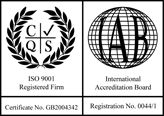
The Impact Of COVID-19 On Catering
Our industry has been hit very hard by the Covid crisis. Staff who have been furloughed for a long period of time can become rusty and through no fault of their own, may have forgotten some of the skills required to perform duties as you need them too.
Long term furlough is akin to being out of work, so our minds, motivation, physical and emotial abilities can become sluggish. Therefore it is vitally important to ‘Re-Induct’ your staff once they return to shifts. Maybe you have changed a few systems and procedures, improved health and safety, introduced new equipment and heirarchy. Enough to make any returnee a little dazed on their first day back.
Aside from emploeyers obligation to ensiure staff have a safe place of work, your biggest concern should be the possible downturn, albeit temporary, in standards and quality outputs. Therefore it would be prudent to devise a ‘return to work training day’ to rejuvenate your staff’s knowledge, re energise teams, revitalise skill sets and ensure they are engaged and up to speed rapidly.
The following is designed to assist you to get your staff back into the workplace after furlough, and also improve performance.

The answer to success and keeping your best people might be encompassed in two simple words -: employee training. From service expectations to commercial kitchen cleaning standards, the right training program can boost retention and serve your bottom line.
Even experienced restaurant workers may have trouble understanding what is expected of them without proper training, says restaurant consultant and coach David Scott Peters, also known as The Restaurant Expert. This can lead to poor performance and job dissatisfaction. And variations in customer experience can lead to lost business.
“Most of our turnover is because they don’t know the job,” possibly leading too…… “They’re embarrassed. And they’d rather leave than ask for help.”
Train the Right Way
Training is a simple solution, but one that many restaurant owners and managers often overlook. Typical training may include a few days of shadowing servers or frenetic commercial kitchen workers. That’s simply not enough to make workers proficient. Instead, you need to take a more holistic approach to restaurant training. Here are six ways training and culture can help.
- Systematise Each Job
You know your restaurant better than anyone. But have you stopped to truly think about what you expect of your staff? “It’s not just: ‘Take an order.’ It’s ‘Take a food-and-beverage order with accuracy for all tables with less than 2 percent mistakes of food in the POS [point of sale] system.’ It’s being that specific and clear. You may expect your chef to periodically greet tables, but if you don’t say so, the chef may not understand that’s a job requirement.
To hit those goals, start by crafting a complete job description for each position in your restaurant, including the standards and metrics that you expect. In addition to cooking and prep, kitchen staff may need to learn everything from how to clean a greasy floor to how to clean an electric griddle. When you map out the specifics of each job, you understand each area your staff members need to learn.
- Write It Down
Create a training manual that includes the areas in which employees need to be trained, including other parts of the restaurant. The front of the house and back of the house should be able to understand the demands placed on each other, she says. When you create a manual that has training instructions, trainers can ensure that they’re covering each area properly.
- Choose the Right Trainers
Everyone needs to be trained, but not everyone is a good trainer. “Often, your best employee in that position isn’t your best trainer—they’re your worst. What they do may come so naturally that they get impatient with others who can’t do the job as well. Identify detail-oriented people who are patient and familiar with your expectations to be trainers, he says. Get feedback from trainees so you can work with the trainer to improve their approach.
- Give Constructive Feedback
Feedback is essential for new employees to grow and learn. Trainers should be attentive to details like how quickly the new employee does what’s expected, whether it’s learning how to use the POS system or using the best sponge for the job. Be sure to reinforce what they’re doing right, too, so they don’t get overwhelmed with negative feedback. Constructive feedback helps new employees learn the ropes and perform to expectations.
- Test…and Then Test Again
A new hire can do the most damage in those first days working independently from the trainer. So testing and checking in on your new hires periodically, and retraining when necessary, are also important steps. You may quiz them on menu items and issues, like how to address food allergies or practices to prevent food-borne illness. Collecting feedback from customers about where the employee may need improvement is another way to identify additional training needs.
- Foster a “Retention Environment”
Work environments that are free of negative conflict and where workers communicate openly with managers and owners go a long way toward keeping workers. Good training opens the door to that kind of communication, Peters says. By creating an environment where employees know that you care about helping them and where they feel free to ask questions, communicate and get better at their jobs, you help retain the best talent


